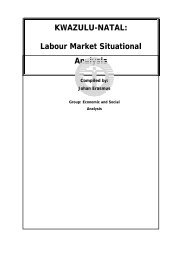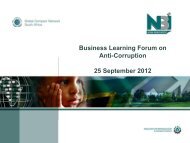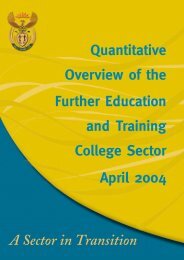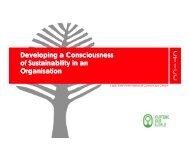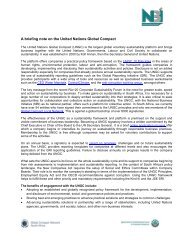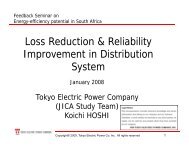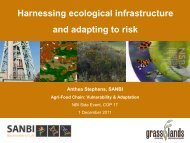Sustainable Forest Finance Toolkit - PwC
Sustainable Forest Finance Toolkit - PwC
Sustainable Forest Finance Toolkit - PwC
- No tags were found...
You also want an ePaper? Increase the reach of your titles
YUMPU automatically turns print PDFs into web optimized ePapers that Google loves.
Costs and benefits of certification:Case study 1 – Malaysia1 of 4The following text is extracted from the World Wildlife Fund(WWF) / Global <strong>Forest</strong> Trade Network (GFTN) report“Natural Capital: Financing forest certification in Malaysia”.While the report focuses on challenges in Malaysia, much ofthe content is applicable to forest management andcertification anywhere in the developing world.ScopeThis study looked at the feasibility of Malaysian companiescommitting to certification of forest management and chainof-custodythrough 44 interviews with company directors,forest managers, log purchasers, traders and governmentagencies between October 2006 and January 2007. Thissection summarises the findings related to the threequestions below.• What are the costs associated with certification, and howdo these costs vary for different <strong>Forest</strong> ManagementUnits (FMUs)?• Are price premiums for certified timber significant?• Is there at present a business case for responsibleforestry?It should be noted that this study did not consider the shortorlong-term cost savings possible through responsibleforestry and certification, as unfortunately none of thecompanies interviewed had quantified such information. Ofgreater concern, however, was the absence of informationon the impact of current logging practices on the value ofMalaysia’s forest assets.Cost factorsCosts of <strong>Forest</strong> Stewardship Council (FSC) and MalaysianTimber Certification Council (MTCC) certification arenumerous and will depend on at least four factors. The firstand arguably most significant factor is the potential impactthat certification has on levels of Annual Allowable Cut(AAC).1. The impact on the AAC levelThe impact on the AAC level depends on several factors,listed below. The topography of the FMU and current landzoningplans, slopes, protected areas, buffer zones andconservation areas all reduce land available for logging. Ifthese have already been demarcated and set aside within anFMU, certification will have less impact; if they are notpresent, they will be required to achieve certification.Current harvesting practicesIf reduced impact logging (RIL) is not currently practised,compliance with certification requirements is likely either toreduce the operator’s ability to extract high volumes oftimber or to add significant costs.The accuracy of the <strong>Forest</strong> Management Plan (FMP)Although the science behind FMP development is clear andfor Peninsular Malaysia must be reviewed by the National<strong>Forest</strong>ry Council every five years, in reality FMPs and AACleveldecisions are of variable quality. FMPs must undergo arobust and detailed review during the certification process,which often results in ‘updated’ FMPs having significantlylower AAC levels than were previously allowed.The extent of natural forest cover on plantation licence areasMany forest areas are simply ineligible under current MTCCand FSC certification standards due to the widespread clearfellingor conversion of logged-over forest areas to fastgrowingtree plantations. Under the FSC scheme, this canpreclude from certification the area undergoing conversionand the plantation that follows, as well as, somewhatperversely, associated areas of natural forest that arecovered by the same licence or licensed to the samecompany but are being sustainably managed.Page 12Although the science is clear, in reality FMPs andAAC-level decisions are of variable quality.A new MTCC plantations standard is under development,which is likely to permit conversion conditional onfulfilment of legal and environmental criteria. However,there does not appear to be much support for modificationof FSC requirements.As a result, if a forest management enterprise holding aplantation licence with significant existing natural forestcover were to seek certification today, it would be requiredto forgo its right to clearfell and convert the existingnatural forest cover and instead adopt a reduced-impactselective logging management system. This would reducesignificantly the volumes of timber that could be extracted.Only one licence holder in Sabah is known to be pursuingthis option.2. Current skill setsOne key practical barrier to implementing RIL andobtaining certification is the shortage of skills andexperience in responsible forest management.For companies with high staff-turnover, low- skilledworkers and informal training procedures, there will beincreased costs and time commitments in training staffwhere RIL skills are lacking.pwc



